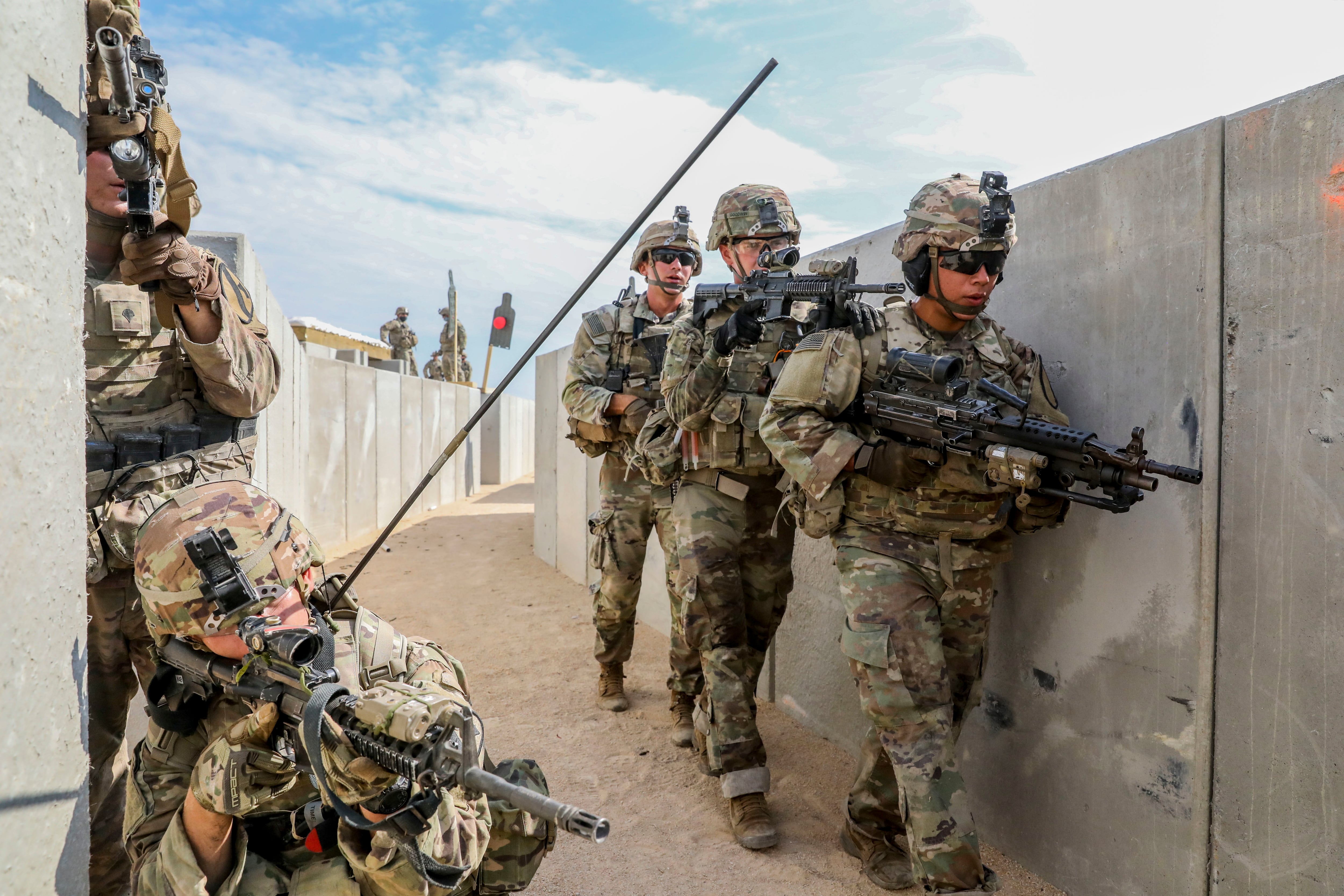As the Army rolls toward a major end strength shortfall driven by a recruiting crisis, the service has been quietly studying where it can afford to cut personnel to ensure its combat formations stay manned even as numbers plunge, its top general told reporters Thursday.
Gen. James McConville, the Army’s chief of staff, likened the personnel reviews to the “night-court” process the service developed in which senior officials combed through the budget and killed more than $35 billion in low-priority programs between 2017 and 2021 to find money for its big-ticket modernization projects.
They’ll need to find a lot of places to cut. The Army’s number two officer revealed to lawmakers last week that despite record retention, the service expects to have 466,000 troops at the end of September due to woeful recruiting, and the number could fall all the way to 445,000 by October 2023.
The service currently maintains 31 Brigade Combat Teams, but that number was authorized with a target end strength of 485,000. McConville insisted that the Army can avoid shuttering BCTs and find savings elsewhere.
“We’ve done what’s called a ‘deep dive,’ or we used to call it night court...with the end strength that we have,” explained McConville. “We are taking a look at every single position in United States, we’ve done that analysis, and we’ve found out where there’s positions that we don’t necessarily require.”
The general said “we can maintain the [BCTs],” but that doing so might also require restructuring them in order to eliminate redundant capabilities from other types of units that the service is expanding, like “air and missile defense [units]...specifically concerned with countering lethal drones.”
The service’s brigade combat teams have grown in size over the past decade, beginning with the addition of a third maneuver battalion to each in 2013.
But as the budget night courts eventually discovered, there’s only so much fat the service can trim before getting to the bone, according to force structure expert and retired Marine Col. Mark Cancian of the Center for Strategic and International Studies think tank.
He thinks the Army can save a few thousand soldiers with targeted cuts to other units and headquarters, but he doubts any BCT restructuring that doesn’t eliminate the third maneuver battalion, which he considers unlikely, “will amount to much.”
“More likely,” Cancian told Army Times in an email, “the Army will understaff all of its units while it waits for recruiting to turn around.”
But that move could result in uneven manning across the Army, with personnel shuffling between BCTs to ensure deploying units have enough soldiers to fight.
Another option could be to reduce the size of some of the service’s Security Force Assistance Brigades to replenish BCTs with their experienced combat arms troops, said Cancian.
The retired colonel explained that the Army’s force structure problem gets more challenging because the service wants to keep adding new units with new capabilities, like multi-domain task forces.
Ultimately, Cancian argued, “the Army needs to make some tough decisions about what positions need to be military and which could be turned over to government civilians or to contractors.
“This recruiting environment could be difficult for a long time.”
Davis Winkie covers the Army for Military Times. He studied history at Vanderbilt and UNC-Chapel Hill, and served five years in the Army Guard. His investigations earned the Society of Professional Journalists' 2023 Sunshine Award and consecutive Military Reporters and Editors honors, among others. Davis was also a 2022 Livingston Awards finalist.





